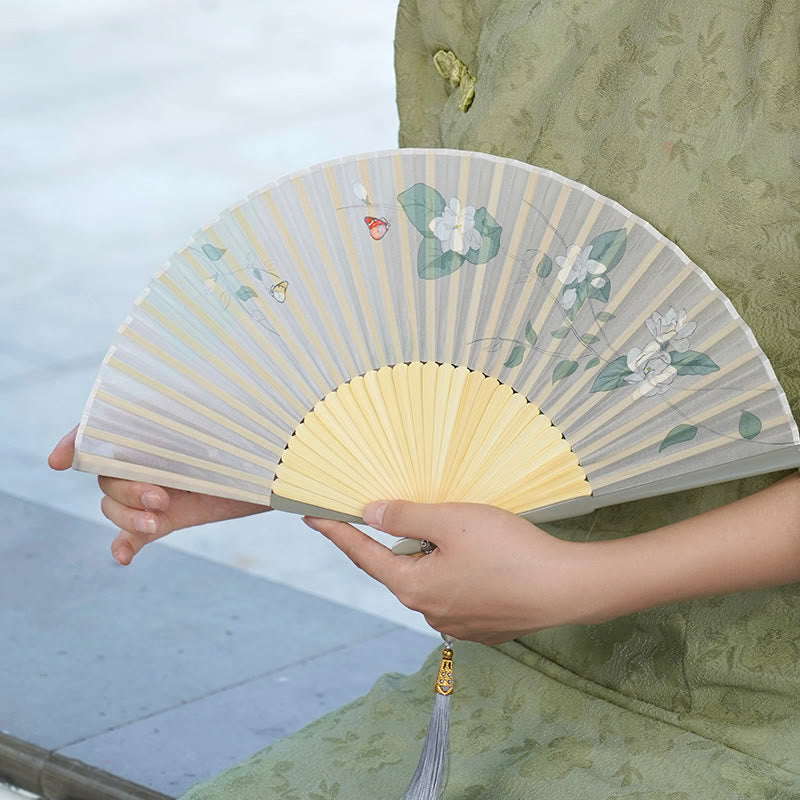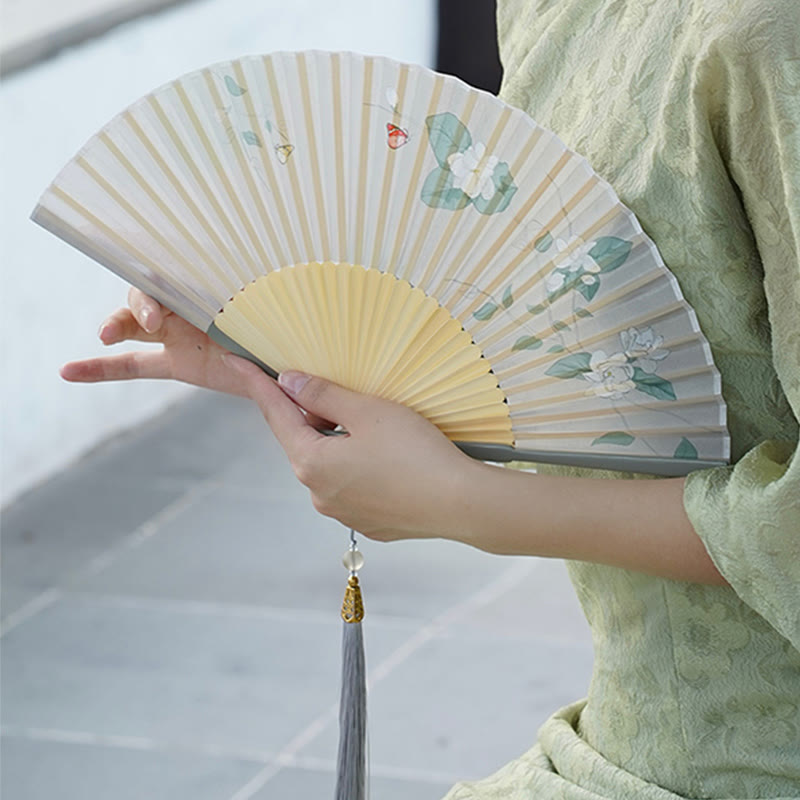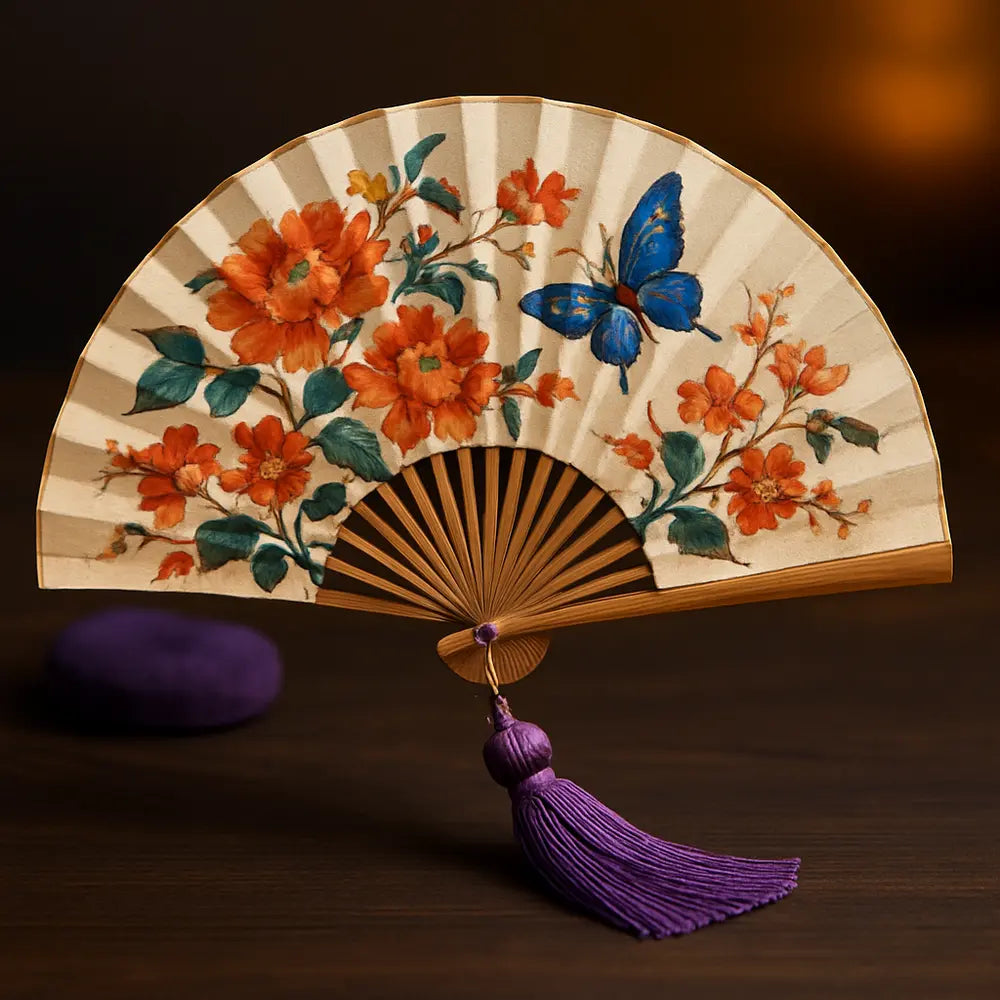
Éventails pliants chinois
58 produits
Affiche 1 - 24 de 58 produits
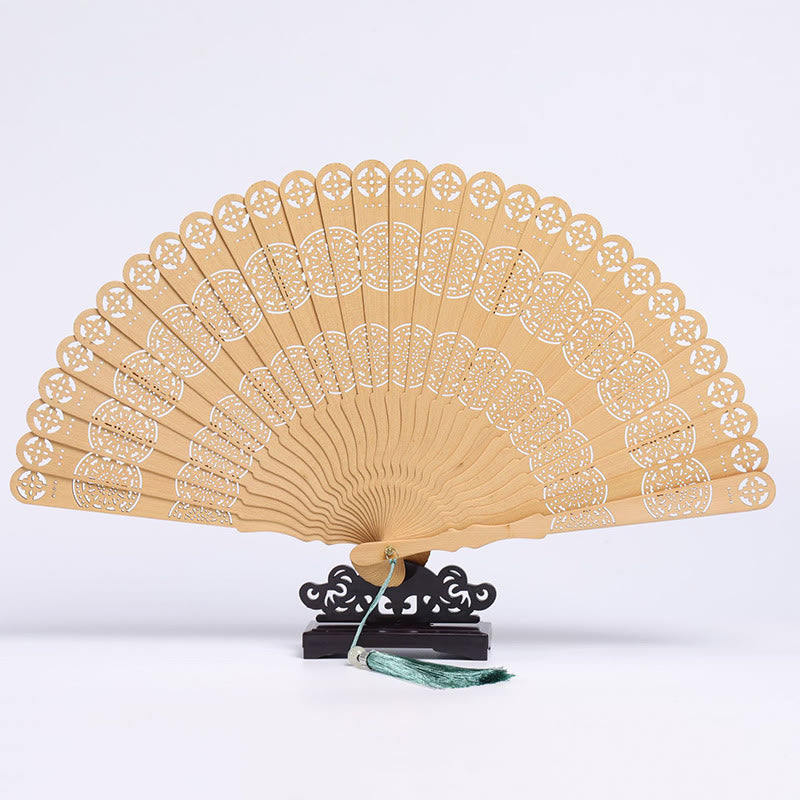
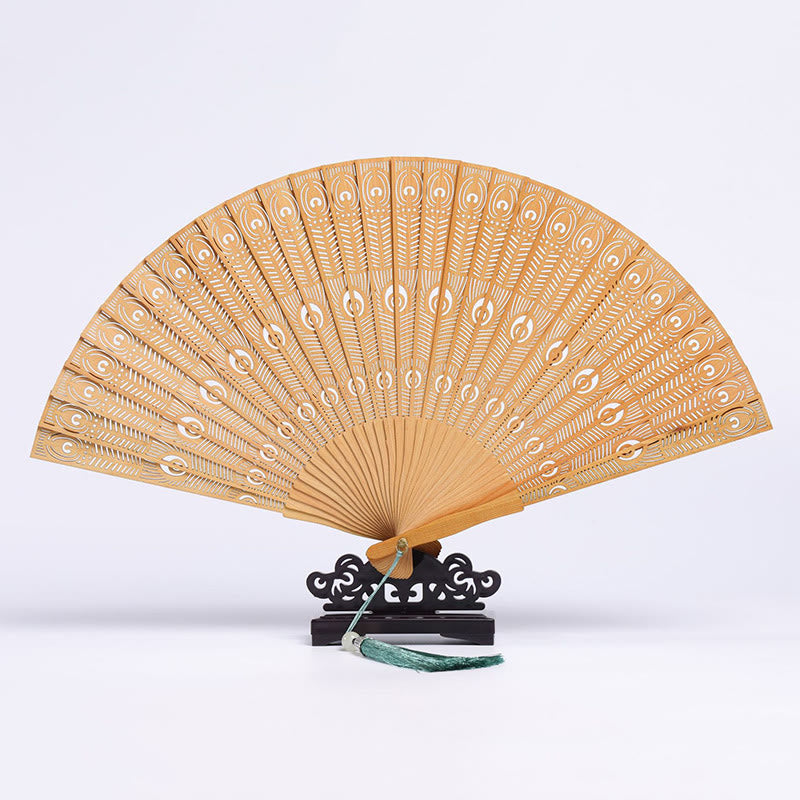
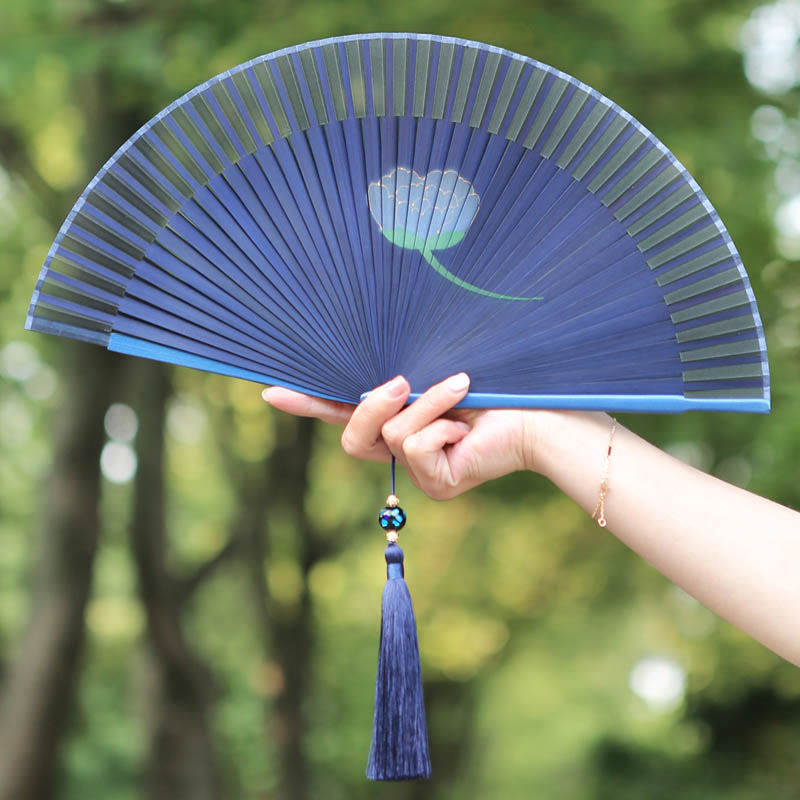
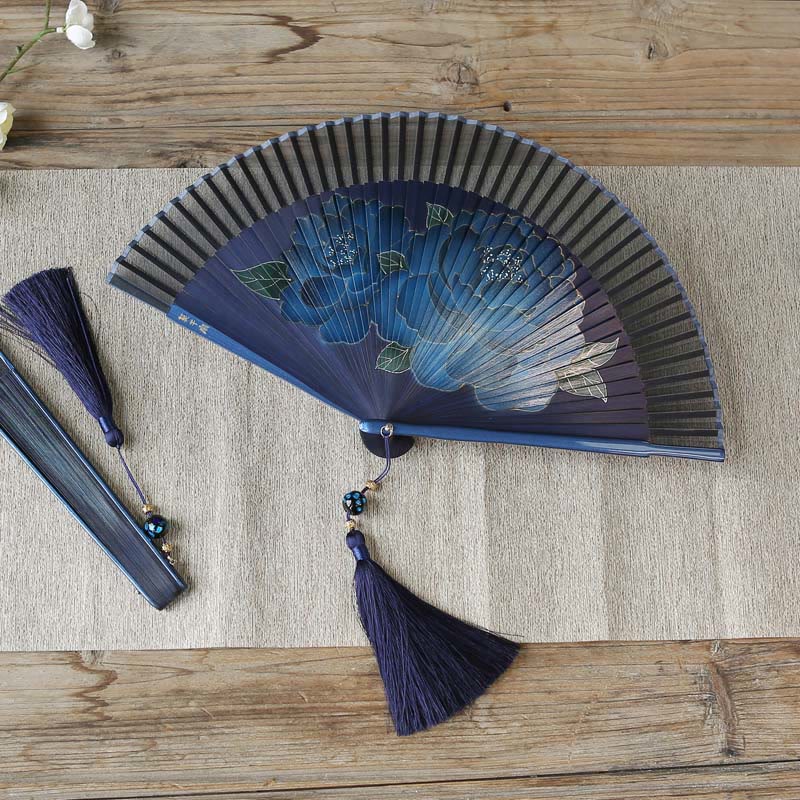
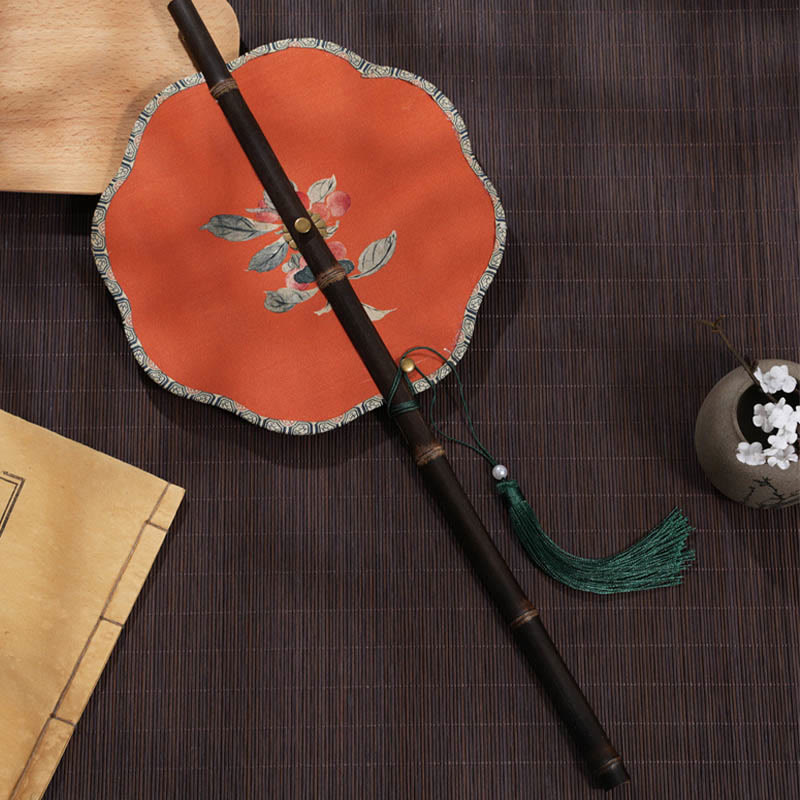
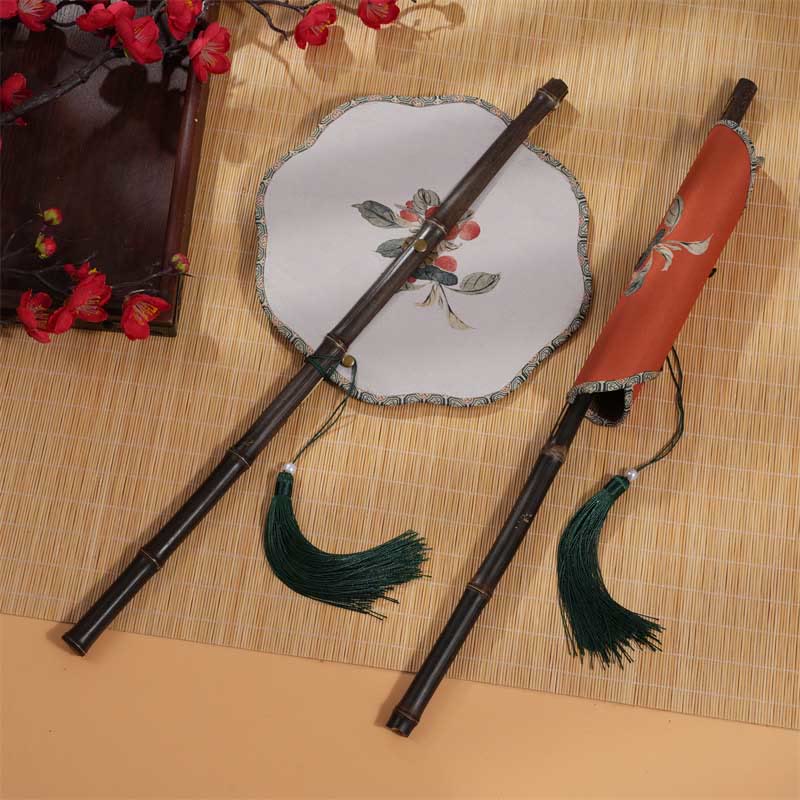
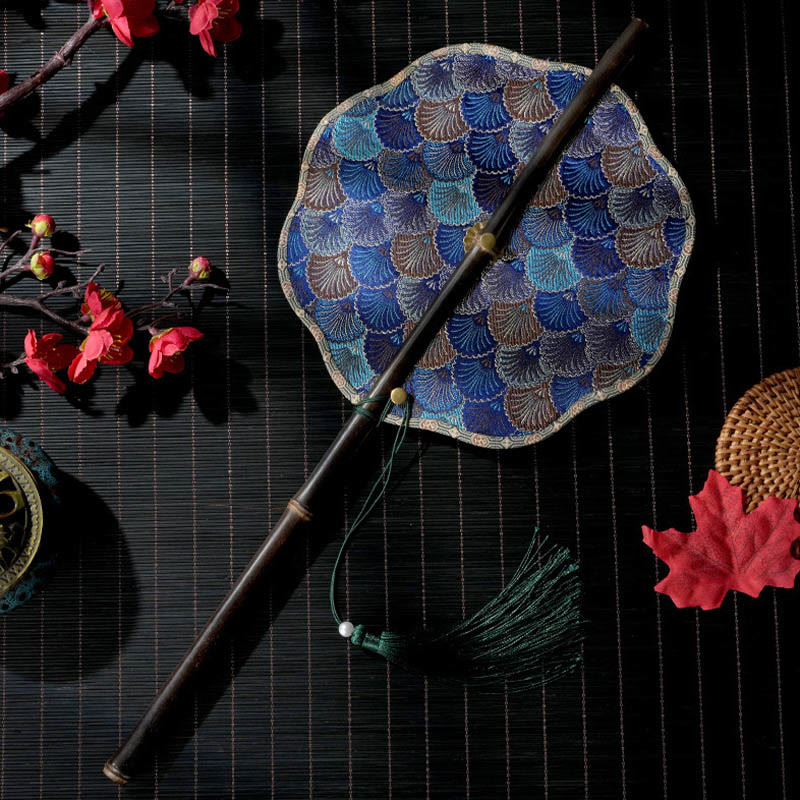
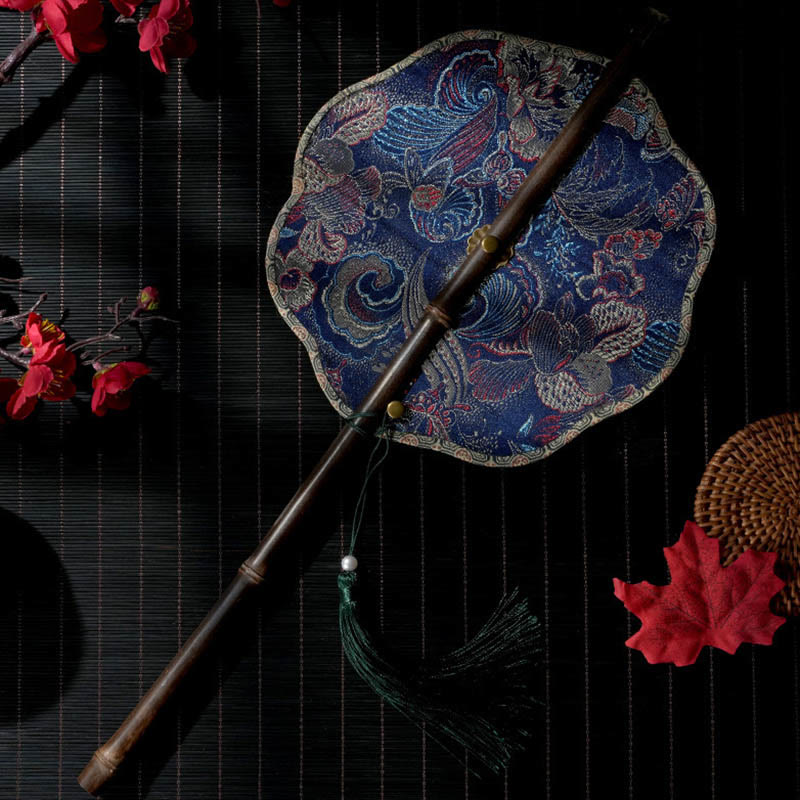
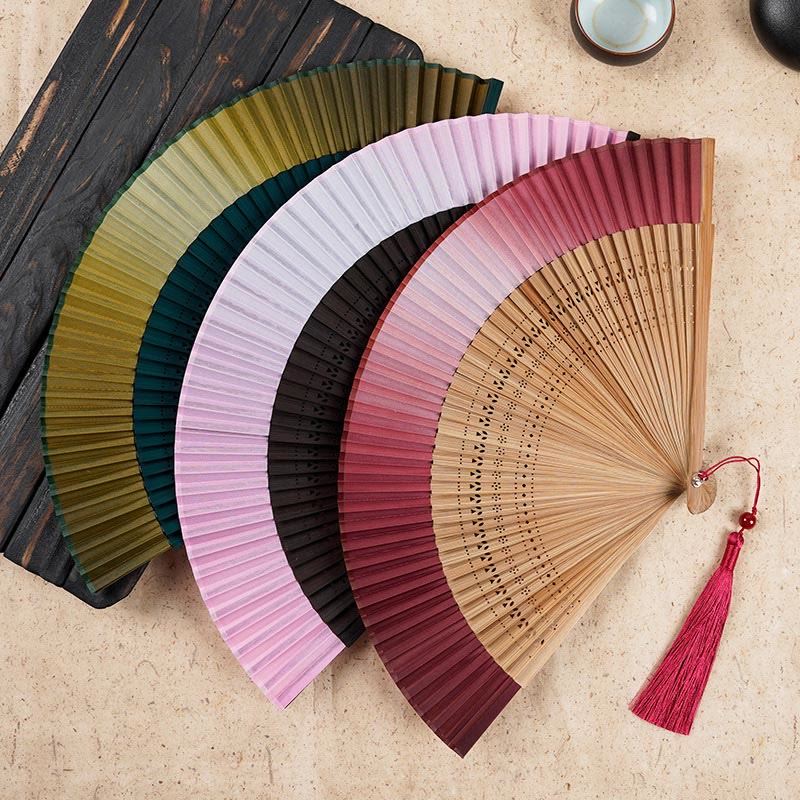
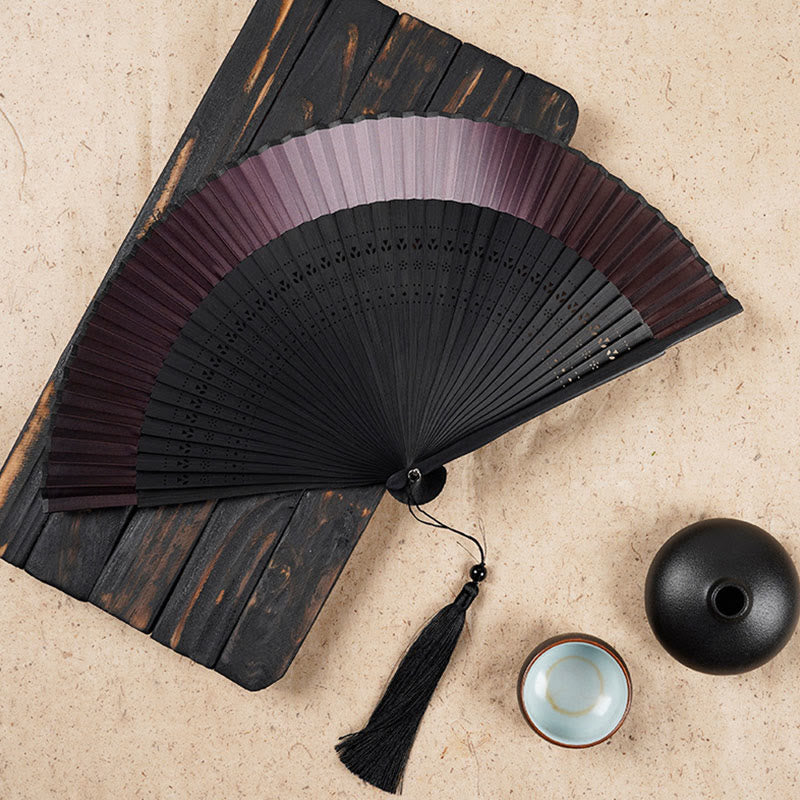


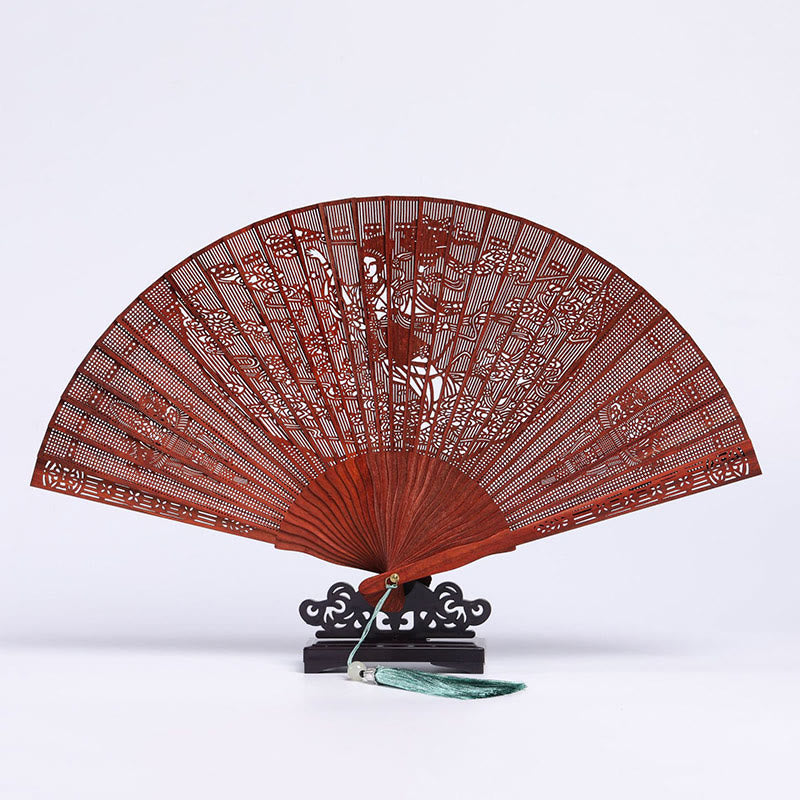
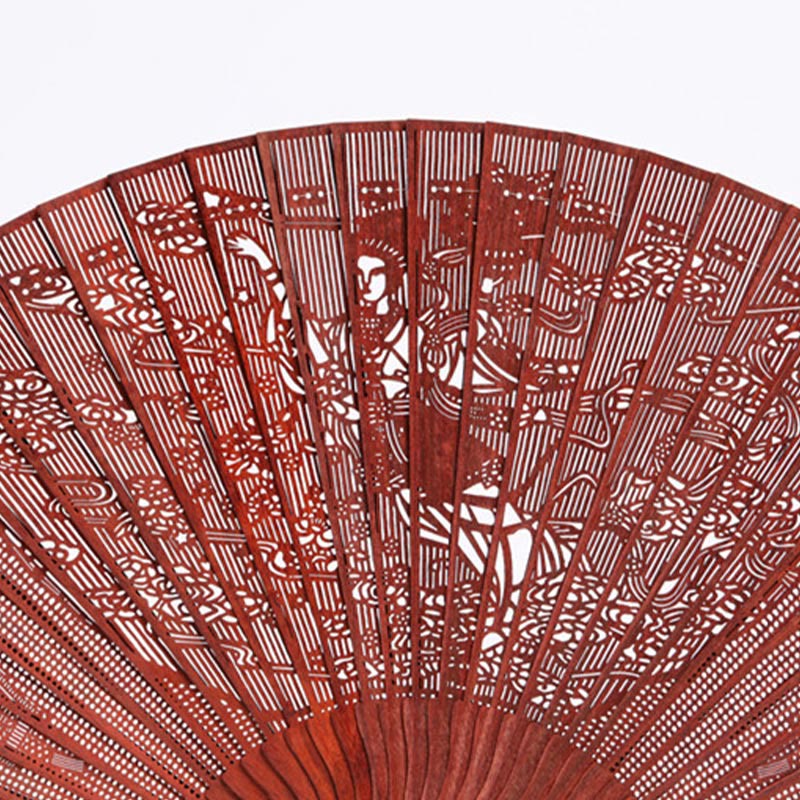
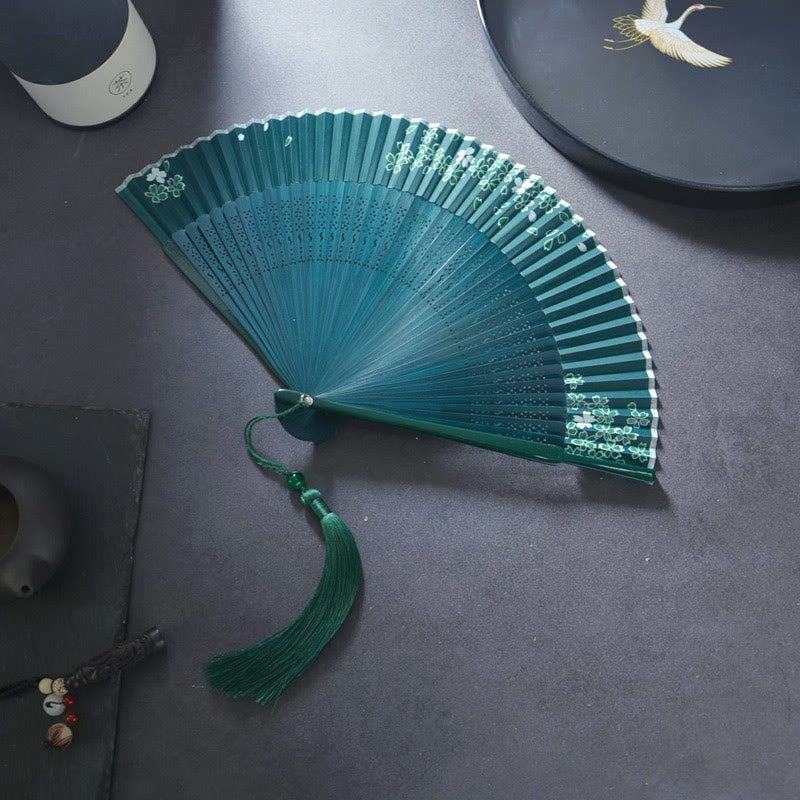
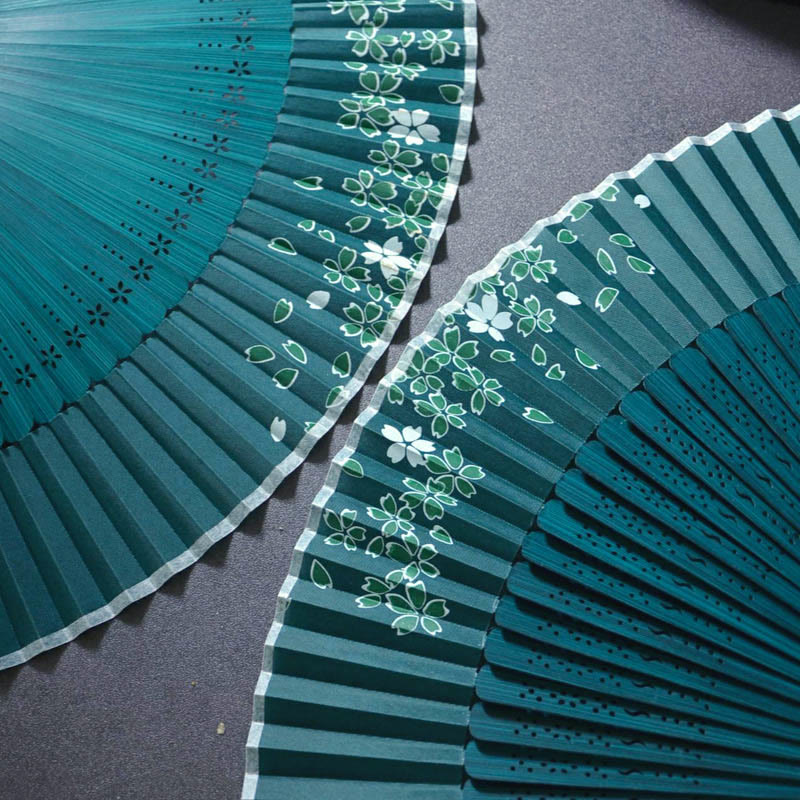
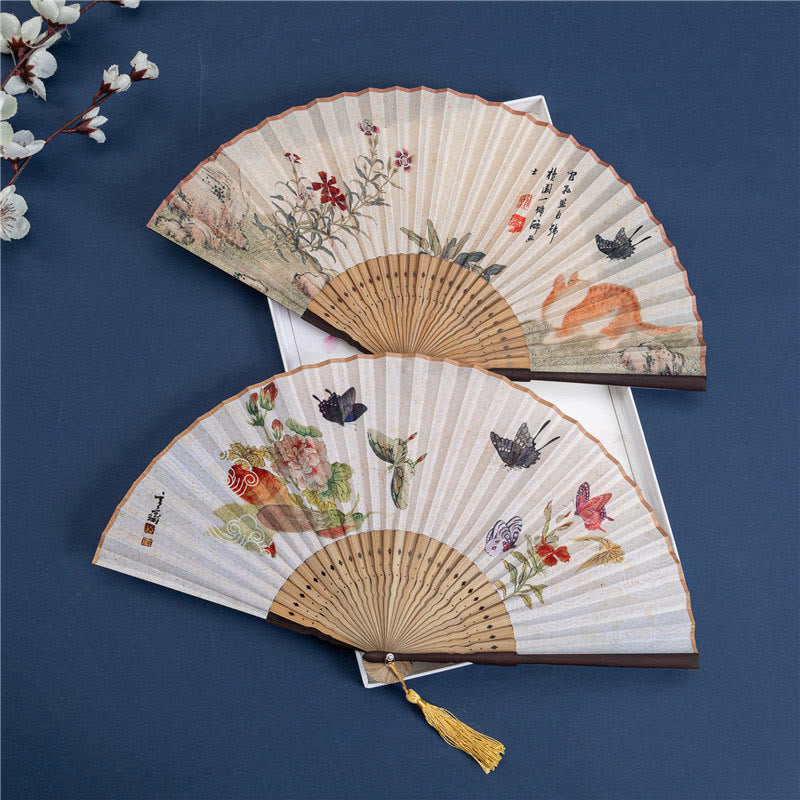
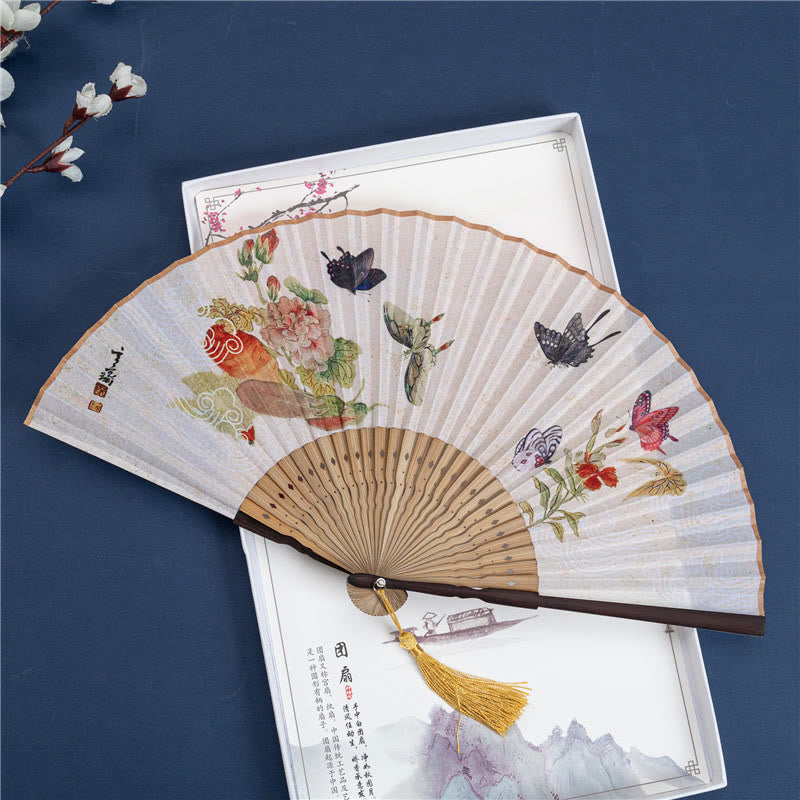
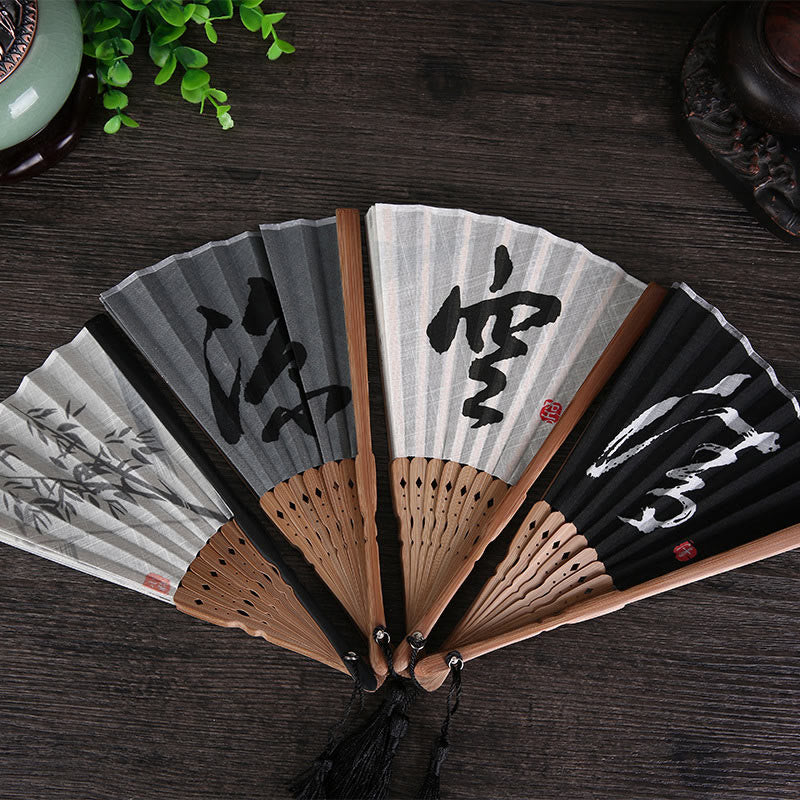
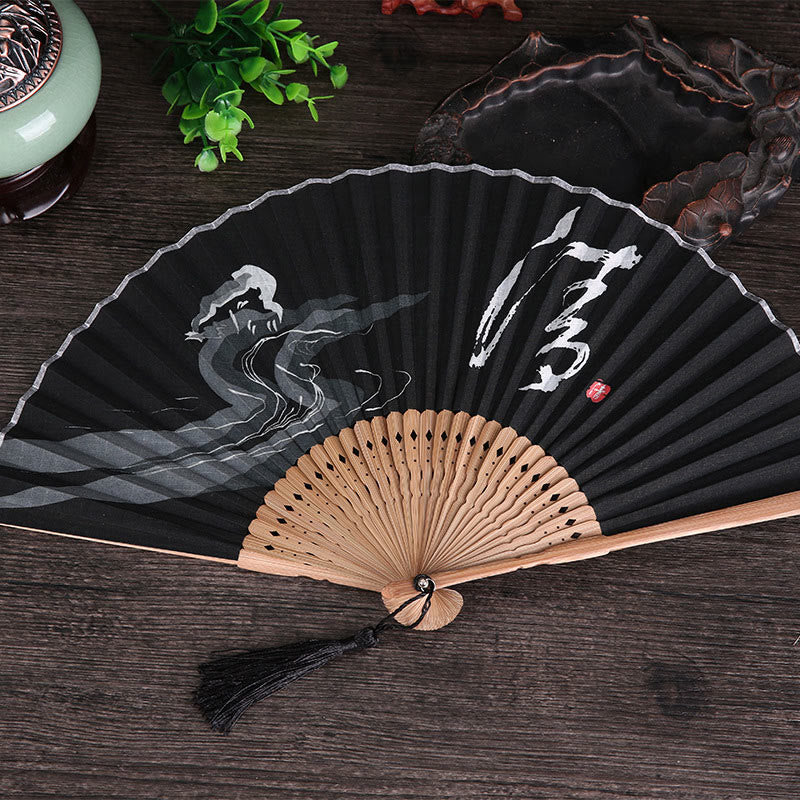
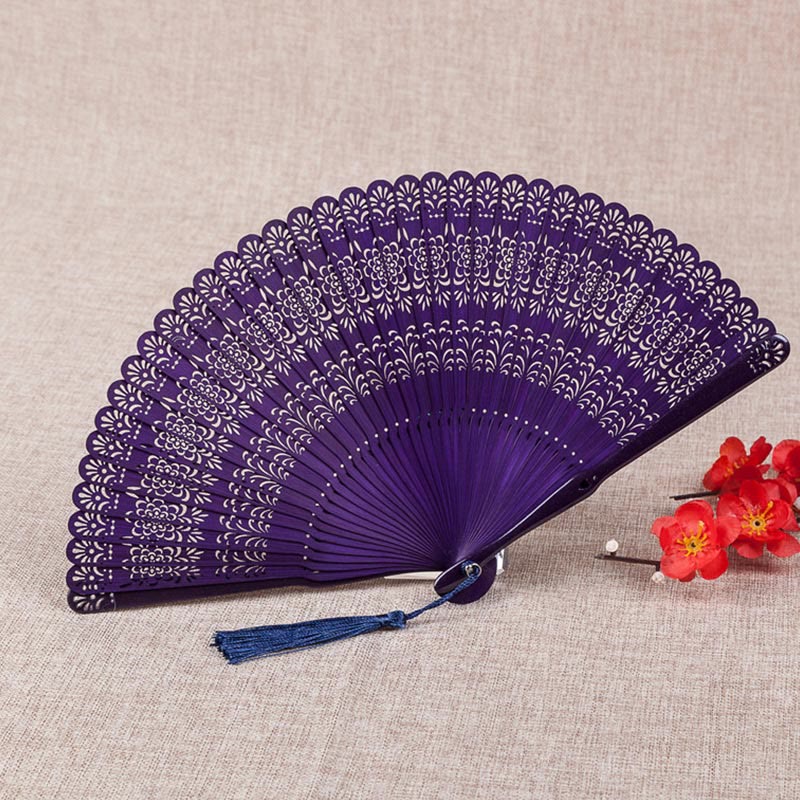
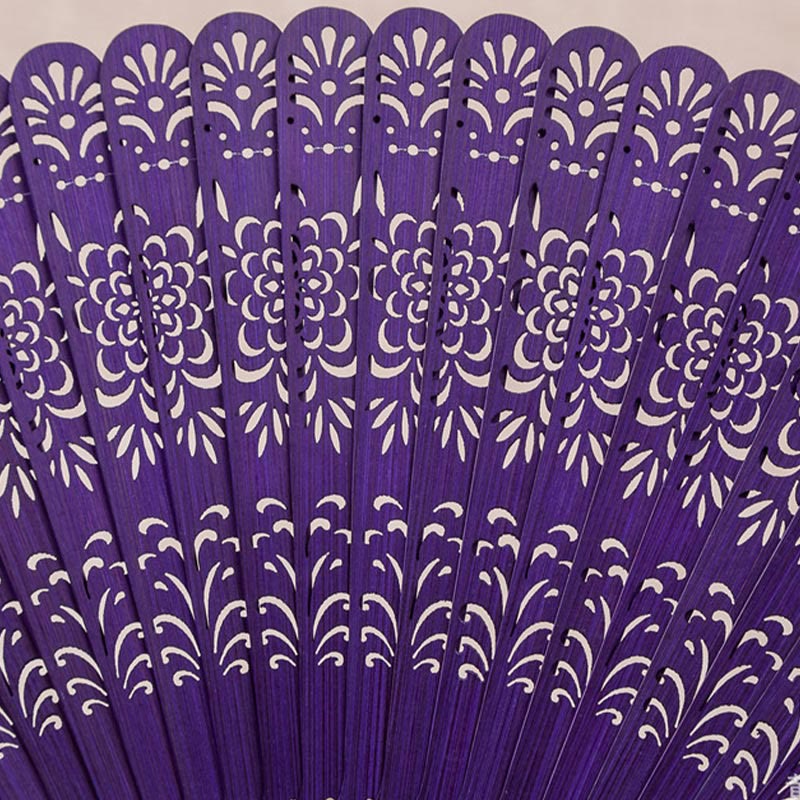
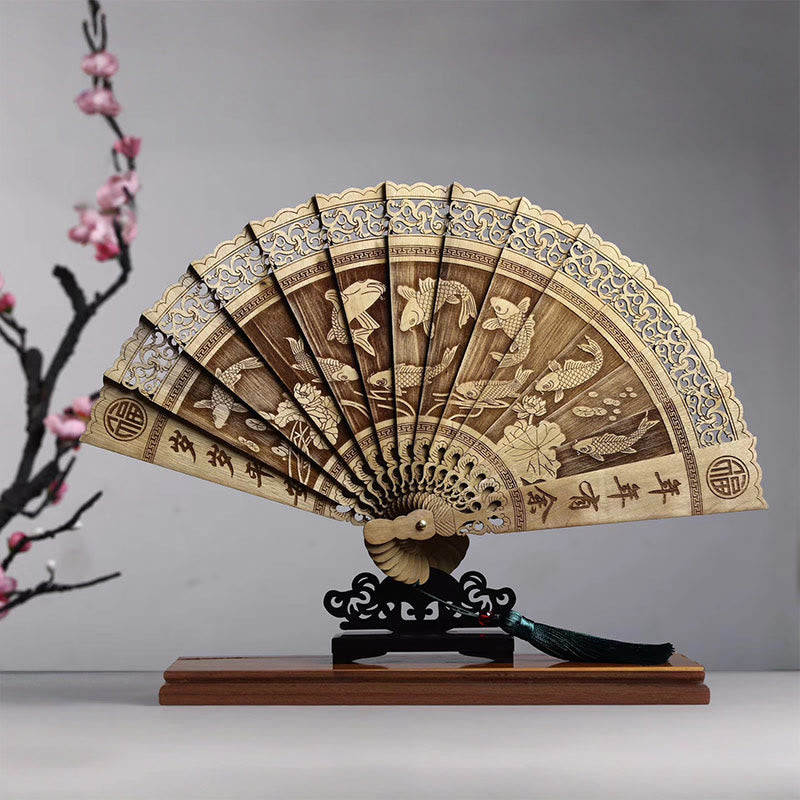
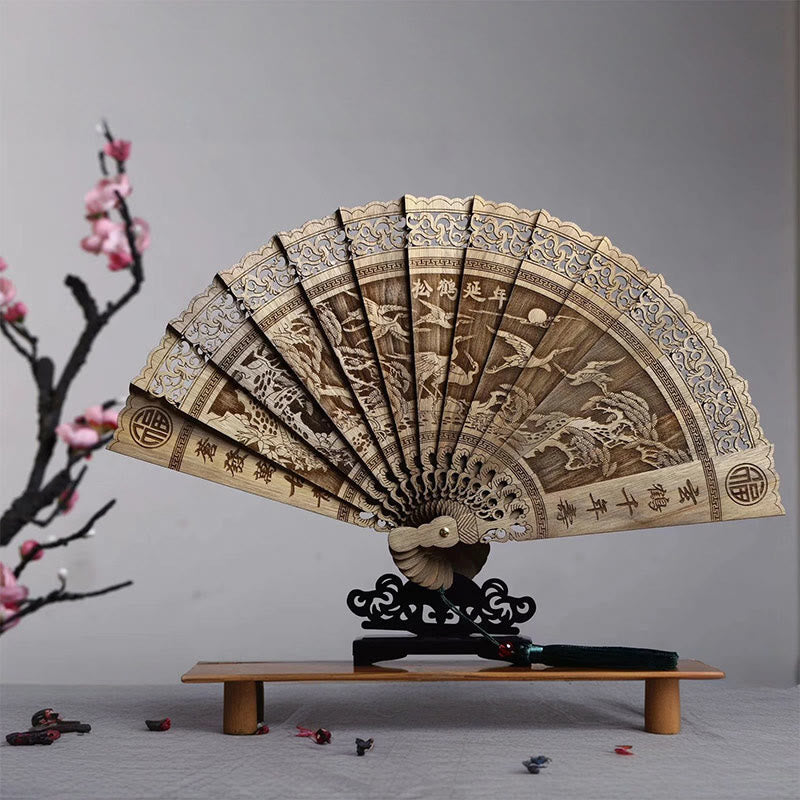
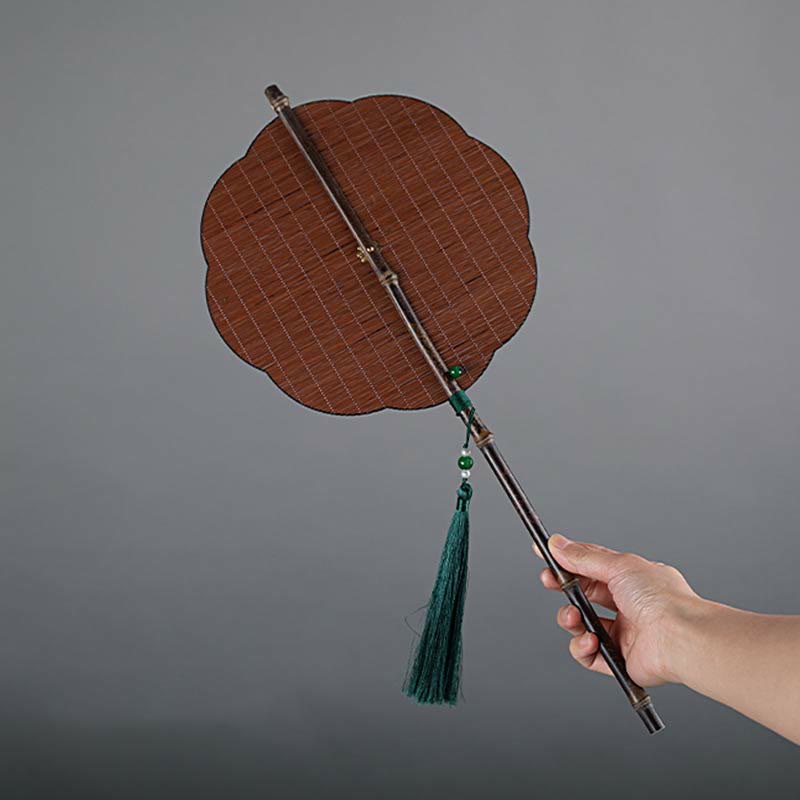
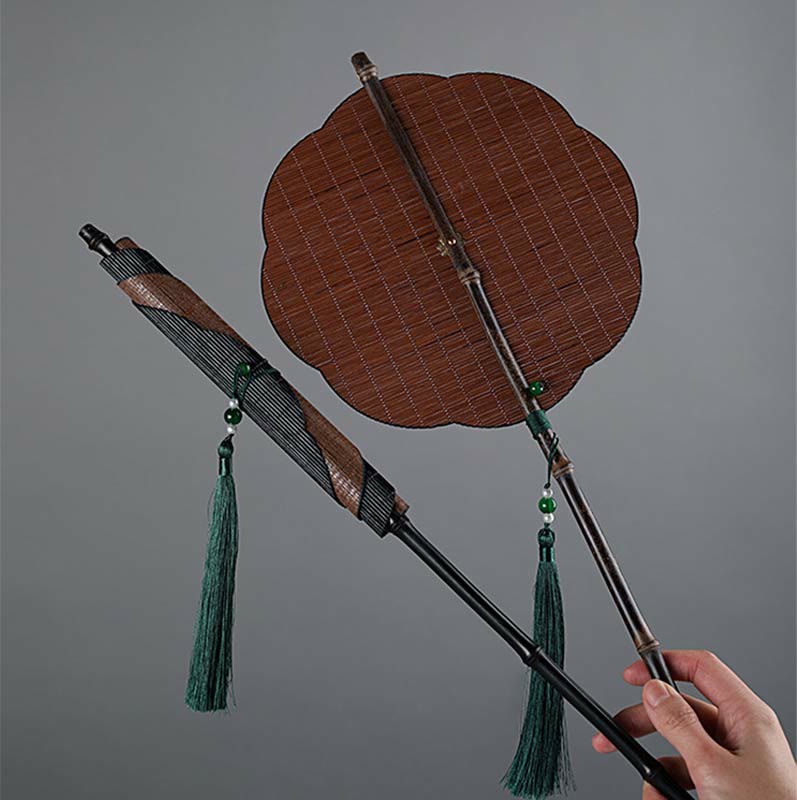
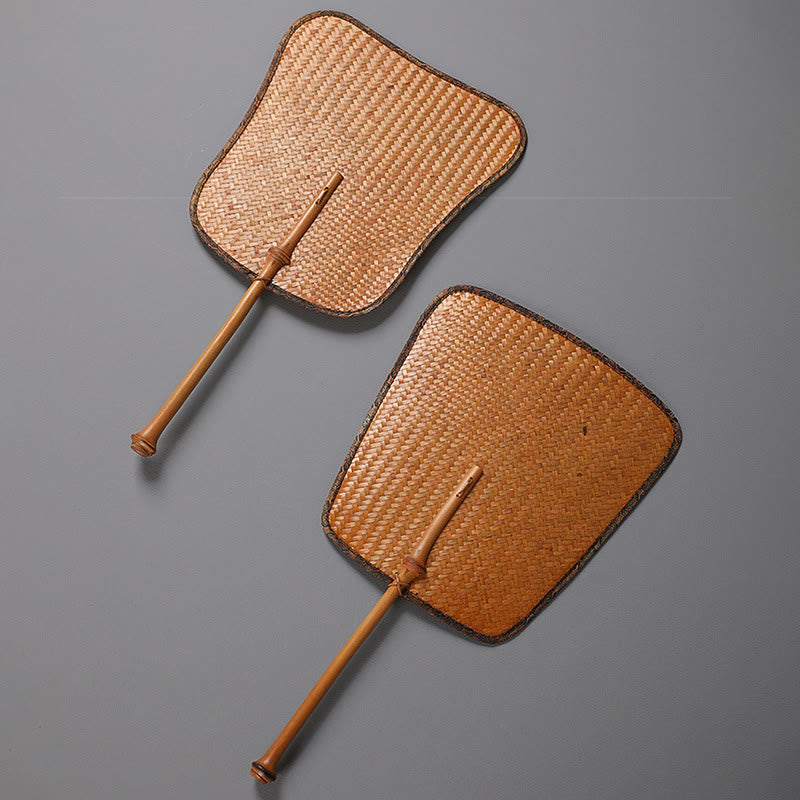

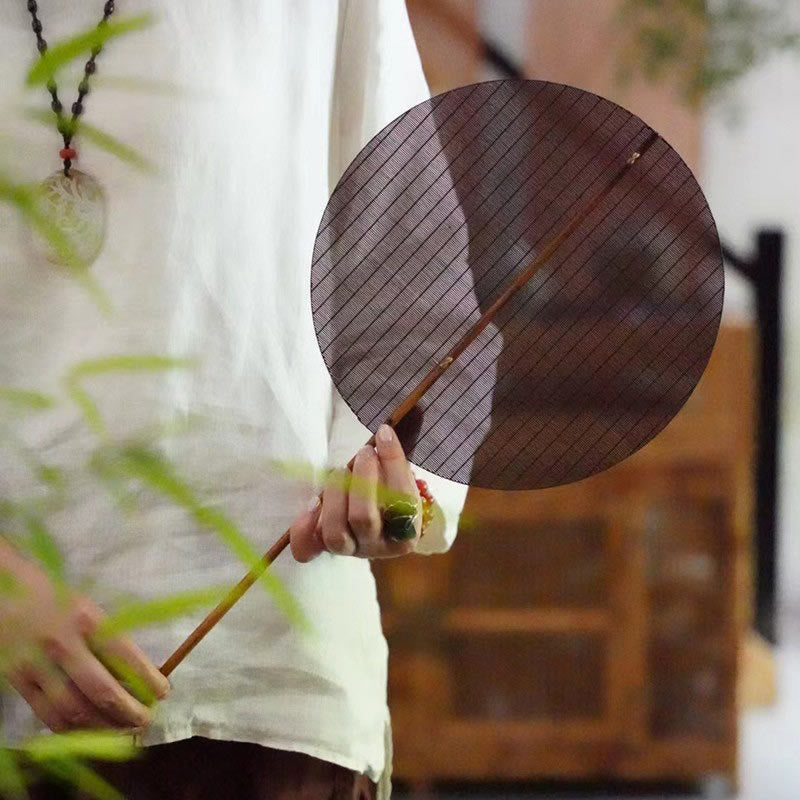
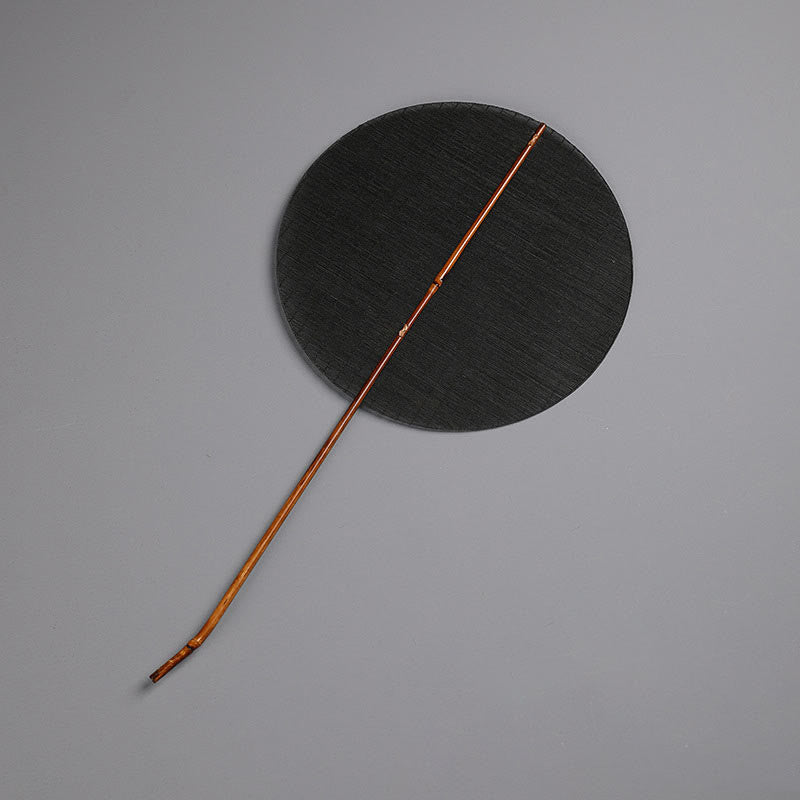
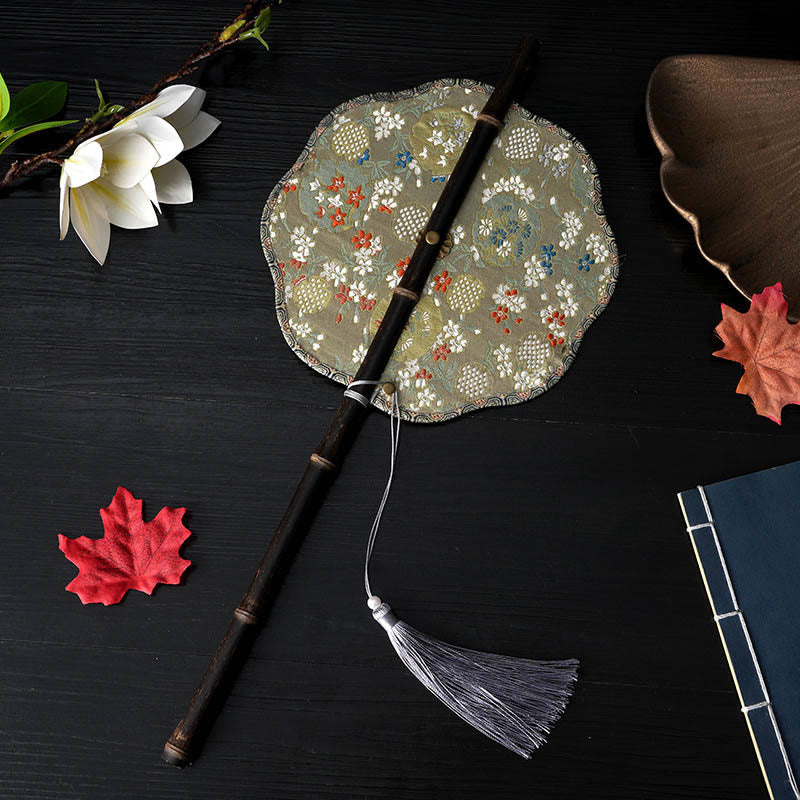
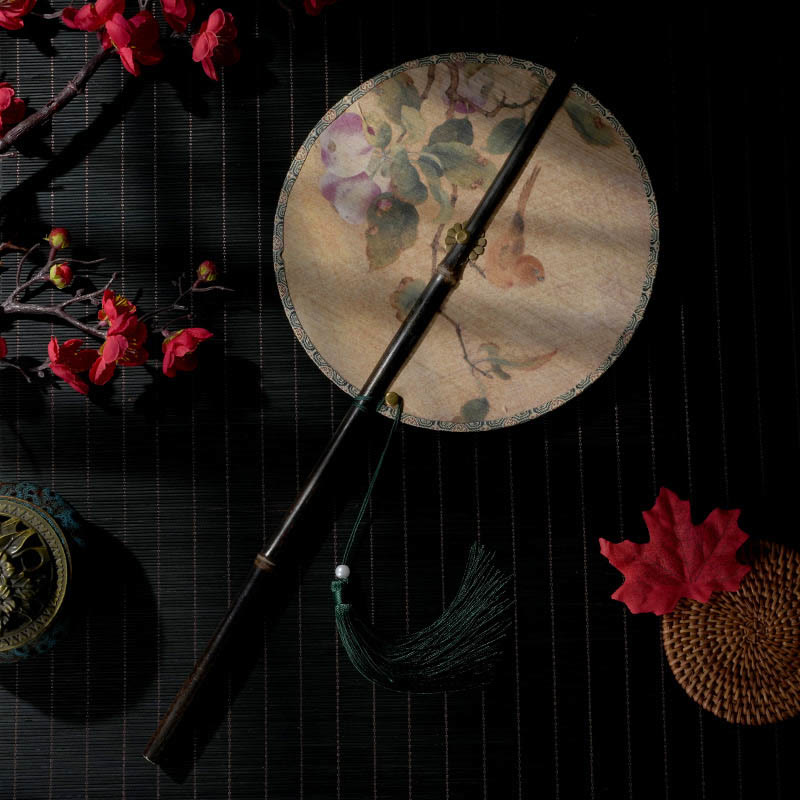
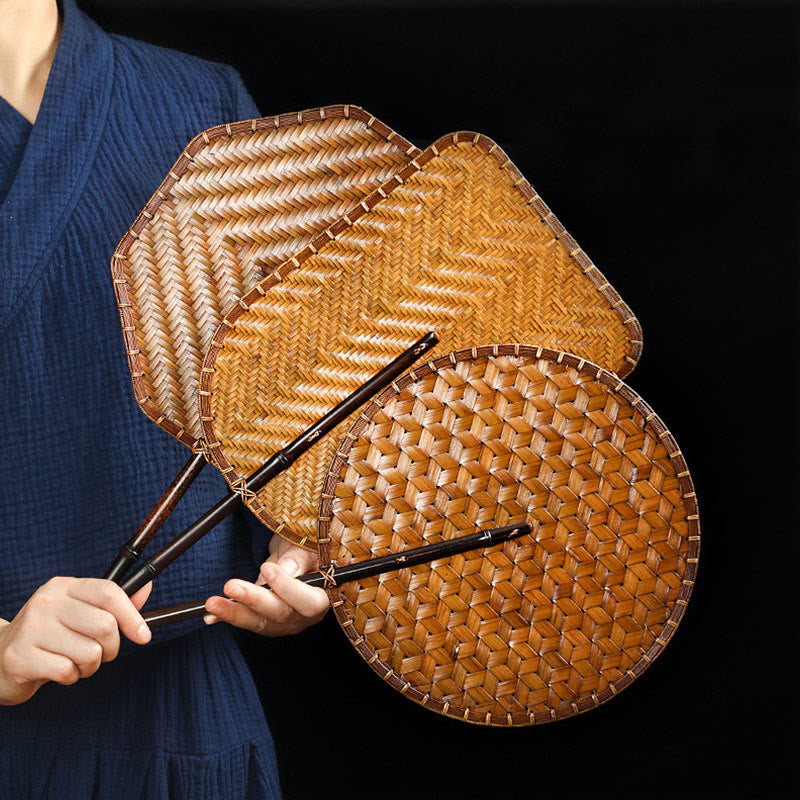
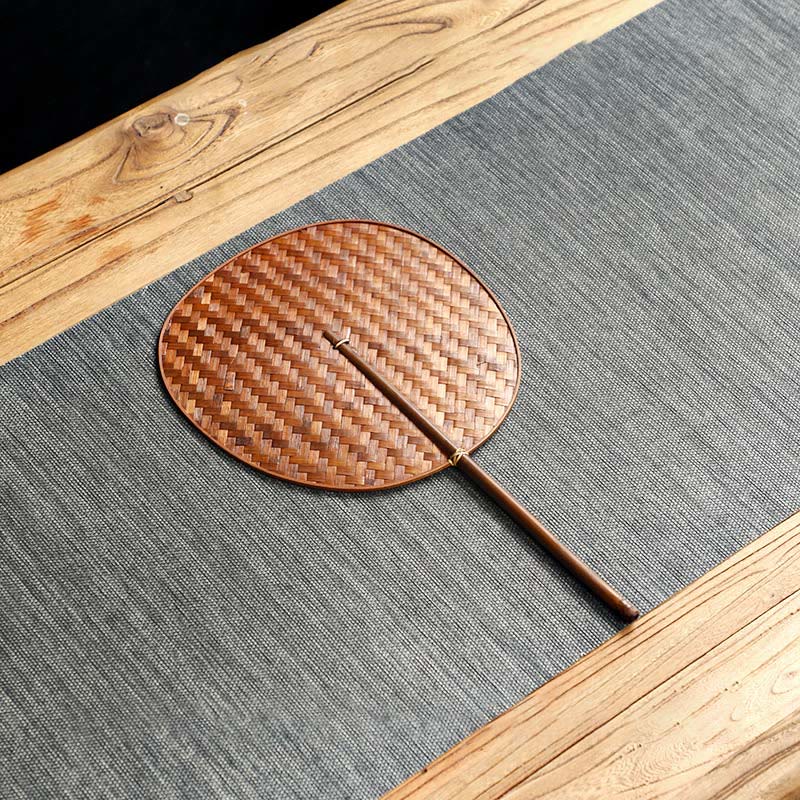
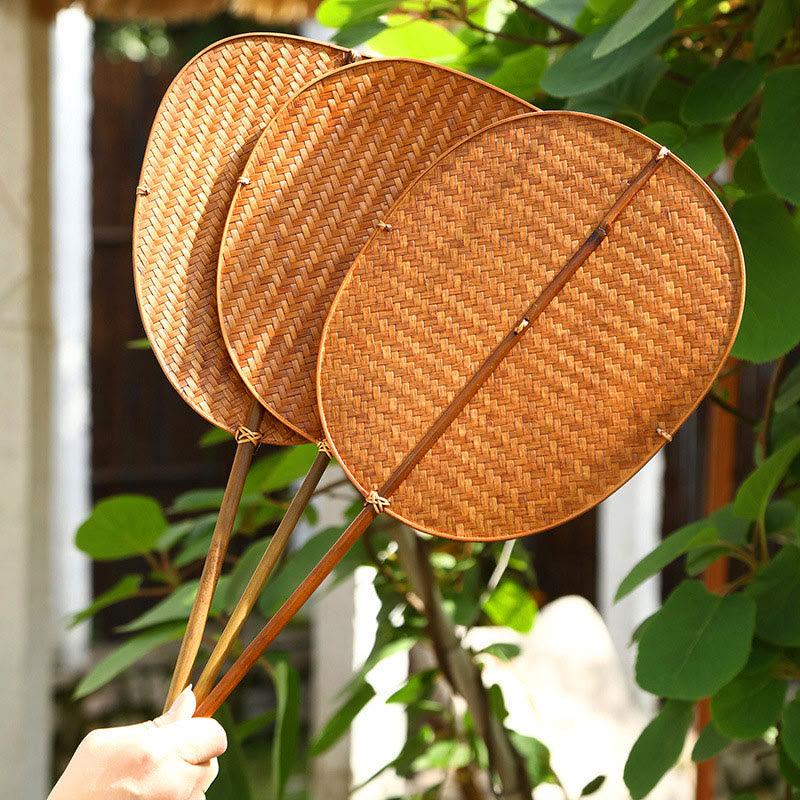
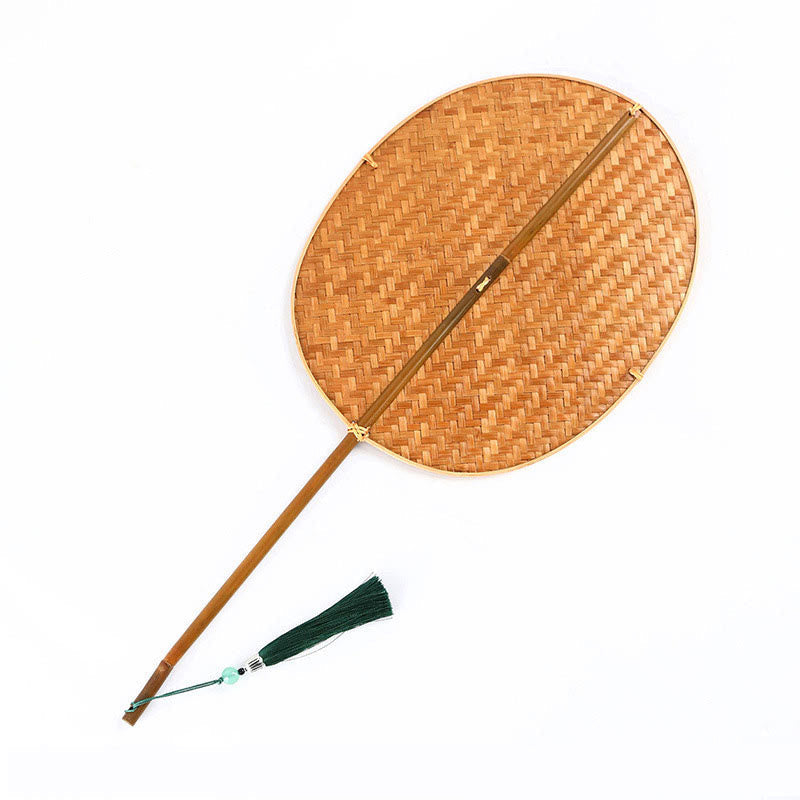

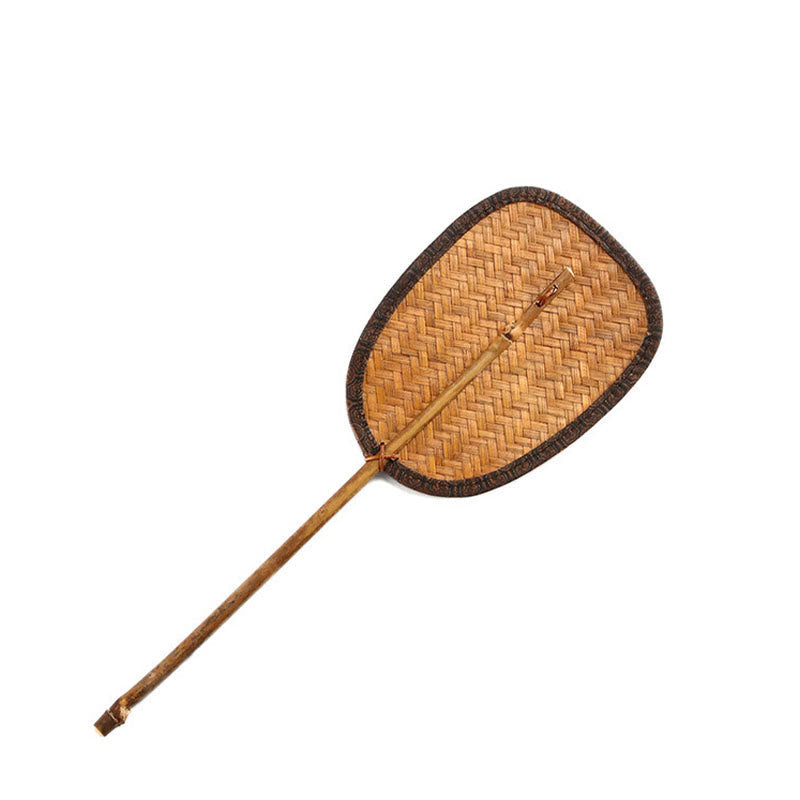


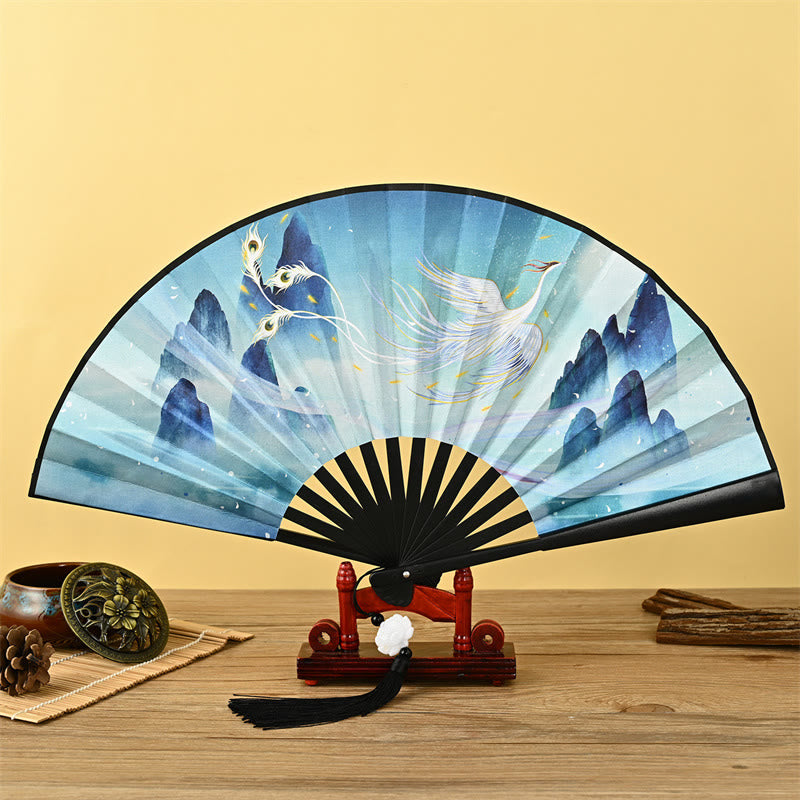


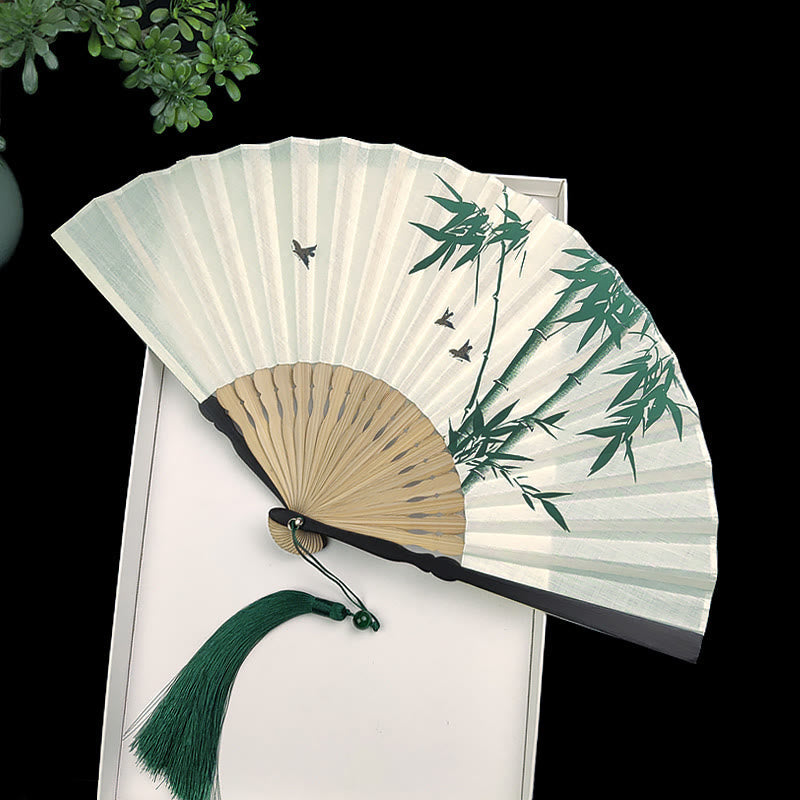
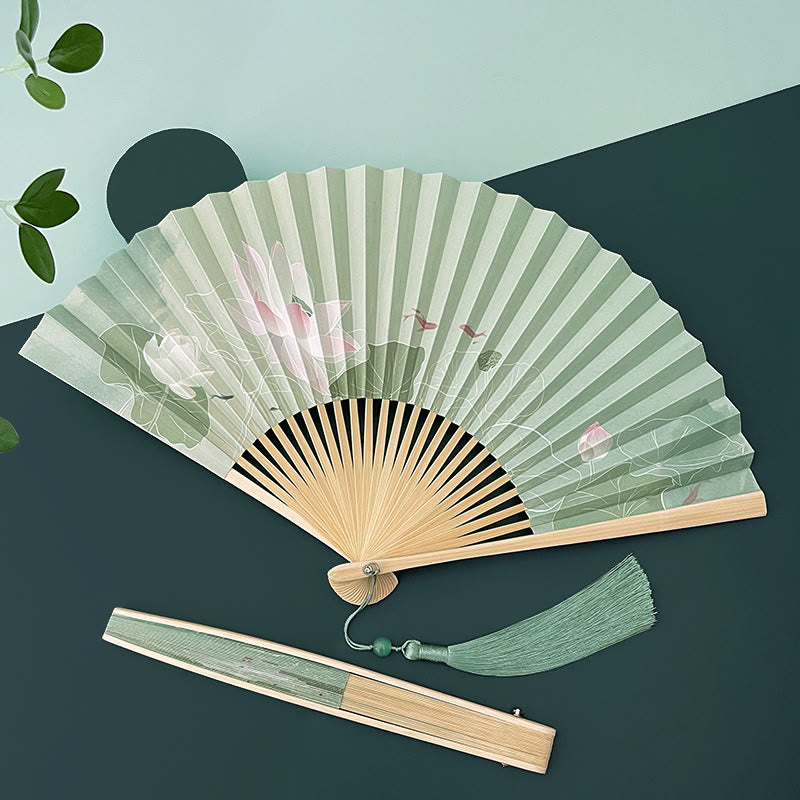
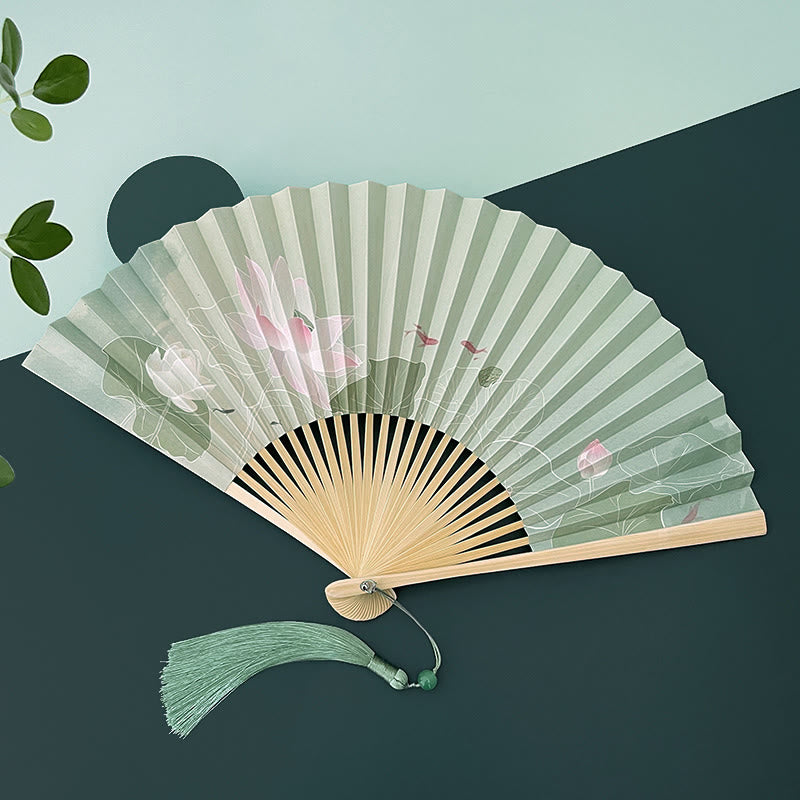
Bienvenue chez Healing Sounds, où traditions intemporelles et expression artistique se rencontrent. Notre collection d' éventails chinois pliants vous invite à découvrir un accessoire riche d'histoire, de culture et d'un savoir-faire exquis, parfait pour les amateurs d'art traditionnel et de symboles culturels profonds.
Chaque éventail chinois pliant de notre sélection est plus qu'un simple instrument pour une douce brise ; c'est un témoignage du patrimoine, un support pour raconter des histoires et un symbole de grâce. Découvrez la délicatesse artistique et les significations profondes que recèlent ces magnifiques objets.
Le charme intemporel de l'éventail chinois pliable
L' éventail chinois , appelé « zh扇 » (zhē shàn) ou « 扇子 » (shànzi) en mandarin, occupe une place importante dans l'histoire et la culture chinoises depuis des millénaires. Son évolution, d'objets simples et fonctionnels à œuvres d'art complexes, reflète les développements artistiques et sociétaux des différentes dynasties. Ces éventails n'étaient pas de simples objets utilitaires pour se rafraîchir ; ils sont devenus des symboles de statut, d'élégance et de recherche d'érudition.
Historiquement, l' éventail oriental était porté par les érudits, les dignitaires et les lettrés, souvent orné de calligraphies, de poèmes ou de peintures délicates. Ouvrir et fermer gracieusement un éventail était considéré comme un art à part entière, exprimant les nuances des interactions sociales et du raffinement personnel. Chez Healing Sounds, nous honorons cet héritage en sélectionnant des éventails qui incarnent ce riche récit culturel, vous offrant ainsi un lien avec des siècles de tradition.
Notre collection s'attache à capturer le charme intemporel de l' éventail chinois traditionnel . Chaque pièce raconte une histoire, que ce soit par sa matière, son motif peint ou le savoir-faire de sa création. Nous sommes convaincus que ces éventails ne sont pas de simples accessoires, mais des vecteurs d'une compréhension plus profonde de la culture et d'une expression personnelle.
Exploration des matériaux pour la fabrication de l'éventail chinois
La beauté et la fonctionnalité d'un éventail chinois dépendent fortement des matériaux utilisés pour sa fabrication. La qualité des matériaux est primordiale : elle conditionne la durabilité, l'esthétique et l'expérience tactile de l'éventail. Notre sélection comprend des éventails fabriqués à partir de matériaux traditionnels et de haute qualité.
L' éventail chinois en soie est l'un des plus prisés. La soie offre une surface luxueuse et lisse, idéale pour les peintures et calligraphies complexes. Son éclat naturel rehausse l'éclat des couleurs et la délicatesse des coups de pinceau, ce qui rend les éventails en soie très prisés pour leur beauté et leur élégance. La légèreté de la soie permet également une douce brise rafraîchissante.
L' éventail chinois en papier offre un charme particulier. Souvent fabriqués à partir de papier traité comme le papier Xuan (papier de riz), ces éventails sont réputés pour leur capacité à mettre en valeur des œuvres d'art et des calligraphies audacieuses. Plus abordables, les éventails en papier sont tout aussi remarquables, offrant un support polyvalent aux artistes. Ils témoignent de l'ingéniosité de l'utilisation de matériaux facilement disponibles pour créer des objets à la fois utiles et esthétiques.
Le bambou est un matériau fréquemment utilisé pour les baleines et les gardes de nombreux éventails chinois, d'où le populaire éventail pliant en bambou . Le bambou est apprécié pour sa résistance, sa souplesse et sa légèreté. Son veinage naturel apporte une touche organique et naturelle au design de l'éventail. Certains éventails sont ornés de bambou finement sculpté ou laqué, ce qui rehausse encore leur valeur artistique. D'autres bois, comme le santal, réputé pour son parfum, ou l'ébène, pour son élégance sombre, sont également utilisés pour la fabrication de cadres d'éventails de haute qualité.
Au-delà de la soie, du papier et du bambou, vous trouverez des éventails intégrant d'autres matériaux, comme des plumes pour une touche d'élégance, ou de l'os et de l'ivoire pour les pièces anciennes (bien que les productions éthiques contemporaines les évitent). Le choix du matériau reflète souvent l'usage prévu de l'éventail : rafraîchissement quotidien, décoration ou cérémonie. Chez Healing Sounds, nous veillons à ce que nos éventails mettent en valeur le meilleur de ces traditions matérielles, alliant beauté et durabilité.
Motifs authentiques et traditionnels sur les éventails chinois pliants
L'attrait d'un éventail chinois réside principalement dans son design et ses motifs traditionnels , profondément ancrés dans la culture, le symbolisme et le patrimoine artistique chinois. L'authenticité culturelle se reflète dans les motifs et les images choisis, chacun porteur d'une signification et d'une importance historique spécifiques.
Les motifs traditionnels courants représentent souvent des éléments de la nature. Des fleurs comme les pivoines symbolisent la richesse, l'honneur et la prospérité, tandis que les fleurs de prunier symbolisent la résilience et la beauté face à l'adversité. Les fleurs de lotus sont associées à la pureté et à l'illumination. Les paysages, ou « shan shui » (montagne-eau), sont également un thème récurrent, reflétant les philosophies taoïstes d'harmonie avec la nature et représentant souvent des scènes sereines de montagnes, de rivières et d'arbres.
Les créatures mythologiques sont un autre sujet populaire. Les dragons, symboles de puissance, de chance et d'autorité impériale, sont fréquemment représentés. Les phénix représentent la beauté, la grâce et la chance. Ces symboles puissants confèrent à l'éventail une signification profonde, le transformant d'un simple accessoire en un talisman d'énergies positives.
La calligraphie joue un rôle essentiel dans la conception de nombreux éventails chinois pliants authentiques . Poèmes, phrases de bon augure ou extraits de textes classiques sont méticuleusement gravés au pinceau sur la surface de l'éventail. Le style calligraphique est en soi une forme d'art, ajoutant une profondeur intellectuelle et esthétique. Souvent, un éventail présente une peinture d'un côté et une calligraphie de l'autre, ou une harmonie des deux.
De nombreux éventails sont des créations chinoises peintes à la main , témoignant du savoir-faire et du talent artistique de chaque artisan. Les techniques utilisées vont du délicat style Gongbi (méticuleux, aux lignes fines) au style expressif Xieyi (à main levée, impressionniste). La présence du sceau ou de la signature de l'artiste peut également témoigner de l'authenticité et du savoir-faire artisanal. Certains éventails sont également ornés d'élégants pompons, ou « pendentifs éventail » (扇坠 - shàn zhuì), souvent en soie ou ornés de jade ou d'autres pierres semi-précieuses, apportant une touche finale de grâce et de mouvement.
Chez Healing Sounds, nous nous efforçons d'offrir des éventails qui honorent ces riches traditions artistiques, vous permettant de posséder une pièce qui est non seulement belle mais aussi une véritable expression du patrimoine culturel chinois.
Comprendre les variations de taille et la portabilité des ventilateurs chinois
Les éventails chinois pliants existent en différentes tailles , chacune adaptée à des usages et des préférences spécifiques. La taille influence non seulement l'esthétique de l'éventail, mais aussi sa portabilité et son utilisation. Comprendre ces variations peut vous aider à choisir l'éventail qui répond parfaitement à vos besoins.
Les petits éventails, souvent de 18 à 25 cm environ une fois fermés, sont des éventails à main très portables . Conçus pour un usage personnel, ils se glissent facilement dans un sac à main ou une poche, ce qui en fait un ventilateur idéal pour les sorties estivales ou un accessoire discret pour les événements sociaux. Leur compacité n'enlève rien à leur potentiel artistique, car même les petits éventails peuvent arborer des détails complexes et de magnifiques motifs.
Les ventilateurs de taille moyenne, généralement de 25 à 33 cm (10 à 13 pouces), offrent un équilibre parfait entre portabilité et grande surface pour exposer des œuvres d'art. Ce sont peut-être les plus courants, suffisamment polyvalents pour un refroidissement pratique et un élément décoratif remarquable. Confortables à tenir et à utiliser, ils offrent une brise agréable.
Les éventails plus grands, dépassant 33 cm et atteignant parfois des dimensions impressionnantes, sont souvent utilisés pour des spectacles, comme dans la danse traditionnelle chinoise (un éventail de danse en papier par exemple), ou comme pièces décoratives remarquables. Bien que moins faciles à transporter au quotidien, ces grands éventails expriment une certaine audace et permettent de réaliser des œuvres plus vastes et détaillées. Le « Tie Shan », ou éventail en fer, dont on raconte historiquement qu'il s'agissait d'une arme dissimulée, était probablement plus robuste et potentiellement plus grand, bien que cela relève davantage de la légende que de la pratique courante pour les éventails du quotidien.
La construction de l'éventail, notamment le nombre de baleines et le matériau de son cadre, contribue également à son confort et à sa portabilité. Un cadre en lamelles de bambou est généralement léger, ce qui facilite sa portabilité, quelle que soit sa taille. Les éventails dotés de plus de baleines ou d'un cadre en bois plus lourd peuvent paraître plus robustes. Le choix dépend en fin de compte de l'usage que vous souhaitez en faire : un éventail en soie pliable et délicat pour une soirée élégante, un éventail chinois robuste en papier pour un usage quotidien, ou un grand éventail orné pour une présentation soignée.
L'importance culturelle et les utilisations de l'éventail pliant oriental
L' éventail oriental est bien plus qu'un simple instrument servant à créer un courant d'air ; c'est un accessoire culturel chinois profondément ancré dans le symbolisme et la tradition. Ses usages s'étendent du pratique au cérémonial, de l'artistique au social, ce qui en fait un objet aux multiples facettes d'une importance culturelle considérable en Chine et au-delà.
Symbole culturel , l'éventail symbolise le statut social, l'intelligence et le raffinement depuis des siècles. Érudits, poètes et dignitaires portaient souvent des éventails ornés de leurs propres calligraphies ou peintures, ou offerts par des artistes renommés, témoignant de leur érudition et de leur goût. Les mouvements doux et réfléchis associés à l'utilisation d'un éventail contribuaient également à une image de grâce et de sérénité.
Dans l'art traditionnel , l'éventail lui-même est devenu une toile unique. Sa forme semi-circulaire ou sectorielle a incité les artistes à créer des compositions adaptées à son format particulier. La peinture et la calligraphie sur éventail sont devenues des formes d'art reconnues, les chefs-d'œuvre d'artistes renommés étant très recherchés. Ces éventails artistiques n'étaient pas seulement destinés à être utilisés, mais aussi à être appréciés et collectionnés, souvent exposés dans les foyers ou offerts comme de précieux cadeaux.
Au-delà de leur usage personnel et artistique, les éventails ont joué un rôle dans le spectacle et la narration. Dans l'opéra et la danse traditionnelle chinoise, les éventails servent d'accessoires pour transmettre des émotions, des personnages et des éléments narratifs. Le mouvement d'un éventail, son ouverture ou sa fermeture, peut exprimer diverses expressions, de la coquetterie à l'autorité. Le « Tuanshan », ou éventail rond et rigide, a également une longue histoire, souvent associé aux dames de la cour avant la généralisation de l'éventail pliant.
L'éventail est également présent dans diverses coutumes et étiquettes sociales. Offrir un éventail peut être un geste de respect, d'amitié ou de bonne volonté. Dans certains contextes historiques, la façon dont un éventail était tenu ou déplacé pouvait véhiculer des messages subtils. Si certaines histoires mentionnent le « Tie Shan » ou « éventail en fer » comme une arme potentielle, il s'agissait là d'une exception ; le rôle premier de l'éventail a toujours été celui de la paix, de l'art et du réconfort personnel.
Chez Healing Sounds, nous célébrons la richesse des significations tissées dans chaque éventail chinois . Nous sommes convaincus qu'en adoptant ces éventails, vous vous connectez à un héritage culturel vibrant qui valorise la beauté, l'art et l'expression réfléchie.
Choisir votre authentique éventail chinois pliable
Choisir un authentique éventail chinois pliable est un voyage personnel qui vous connecte à une riche tradition artistique et culturelle. Chez Healing Sounds, nous vous aidons à trouver l'éventail qui correspond à vos préférences esthétiques, à l'usage que vous souhaitez en faire et à votre goût pour l'artisanat authentique.
Considérez d'abord la qualité du matériau . Êtes-vous attiré par le toucher luxueux d'un éventail chinois en soie , parfait pour les occasions élégantes et pour mettre en valeur des œuvres d'art délicates ? Ou peut-être préférez-vous le charme traditionnel d'un éventail chinois en papier , idéal pour des motifs audacieux et des calligraphies. Pour un éventail alliant durabilité et beauté naturelle, un éventail chinois pliable en bambou est un excellent choix grâce à sa structure à la fois légère et résistante.
Réfléchissez au design et aux motifs traditionnels . Préférez-vous les paysages sereins, les motifs floraux éclatants, les créatures mythologiques porteuses de bon augure ou l'élégante simplicité de la calligraphie ? Chaque motif possède sa propre symbolique et son esthétique. Un authentique éventail chinois pliable présente souvent des détails peints à la main ou des images traditionnelles soigneusement imprimées, témoignant d'un haut niveau artistique. Recherchez la clarté du dessin et la précision de la fabrication.
Pensez aux variations de taille et à la portabilité . Si vous envisagez de transporter votre ventilateur au quotidien, un format plus petit et compact sera pratique. Pour une utilisation décorative ou comme objet de décoration, un ventilateur plus grand sera peut-être plus adapté. L'usage prévu guidera votre choix : un ventilateur léger pour le refroidissement, ou un modèle plus robuste pour une utilisation intensive ou fréquente.
L'authenticité culturelle est également un critère essentiel. Si de nombreux éventails sont magnifiques, une pièce authentique raconte souvent une histoire plus profonde. Cela peut se refléter dans le respect des styles artistiques traditionnels, la qualité des matériaux ou le savoir-faire artisanal. Chez Healing Sounds, nous sélectionnons notre collection en privilégiant les éventails qui honorent l'esprit et les techniques de la fabrication traditionnelle chinoise des éventails.
En fin de compte, le meilleur éventail pour vous est celui avec lequel vous ressentez une connexion. Que ce soit par l'histoire racontée par son œuvre, la texture de ses matériaux ou la douce brise qu'il crée, l'éventail que vous choisirez devrait vous apporter joie et reconnaissance pour son héritage.
Préserver la beauté de votre éventail en soie chinois et autres types
Un éventail chinois pliant , qu'il s'agisse d'un délicat éventail en soie ou d'un robuste éventail de danse en papier , est un objet de beauté et de signification culturelle qui mérite d'être entretenu pour préserver son état et sa longévité. Une manipulation et un rangement appropriés garantiront que votre éventail restera un objet précieux pendant des années.
Lorsque vous ouvrez et fermez votre éventail, procédez avec douceur. Évitez de forcer pour l'ouvrir ou le fermer, car cela pourrait endommager les nervures et le point de pivot (rivet). Maintenez les baguettes de protection (les deux pièces extérieures) et guidez les feuilles de l'éventail en douceur. Pour un éventail chinois en soie , une attention particulière est requise, car la soie est plus susceptible de se déchirer ou de se froisser si elle est manipulée brutalement.
Protégez votre ventilateur de l'humidité, de la lumière directe du soleil et des températures extrêmes. Une exposition prolongée au soleil peut altérer les couleurs, notamment sur les surfaces peintes ou imprimées. L'humidité peut endommager le papier et la soie, et provoquer la déformation ou la moisissure des composants en bois ou en bambou. Rangez votre ventilateur dans un endroit frais et sec.
Lorsqu'il n'est pas utilisé, il est préférable de garder votre éventail fermé. De nombreux éventails sont livrés avec une housse ou une boîte de protection, idéale pour le rangement. Si votre éventail est doté d'un pompon, veillez à ce qu'il ne s'emmêle pas ou ne se coince pas pendant le rangement. Pour un éventail asiatique décoratif destiné à être exposé, pensez à un pied ou à une boîte-cadre pour le protéger de la poussière et des dommages accidentels tout en mettant en valeur sa beauté.
Dépoussiérez délicatement votre ventilateur avec une brosse douce et sèche. Évitez d'utiliser de l'eau ou des solutions nettoyantes, surtout sur les surfaces peintes ou en papier, car cela pourrait causer des dommages irréparables. Si votre ventilateur a un cadre en bambou ou en bois, vous pouvez l'essuyer de temps en temps avec un chiffon légèrement humide si nécessaire, en veillant à ce qu'il soit bien sec ensuite. Faites toujours un essai préalable sur une zone peu visible.
En suivant ces conseils d'entretien simples, vous pouvez préserver la beauté complexe et le savoir-faire de votre éventail pliant chinois , lui permettant de continuer à apporter élégance et une touche de tradition dans votre vie.
Nous espérons que cette exploration du monde des éventails chinois vous inspirera. Chaque éventail de notre collection Healing Sounds est sélectionné avec soin, célébrant l'art et la richesse culturelle qu'il représente. Nous vous invitons à découvrir une pièce qui vous parle et à perpétuer une tradition d'élégance et de respect. Explorez nos offres et trouvez l' éventail chinois idéal pour ajouter une touche de beauté intemporelle à votre vie.
Questions fréquemment posées sur les éventails chinois
Les éventails chinois sont généralement appelés « 扇子 » (shànzi) en mandarin. Le terme spécifique pour un éventail pliant peut être « 摺扇 » (zhéshàn). Il s'agit d'un type particulier d' éventail oriental à main, largement reconnu pour ses motifs traditionnels et son importance culturelle.
Le terme spécifique pour un éventail pliable en chinois est « 摺扇 » (zhéshàn). « 摺 » (zhé) signifie plier, et « 扇 » (shàn) signifie éventail. Cela le distingue des éventails rigides, appelés « 团扇 » (tuánshàn), ou éventails ronds.
Les éventails chinois pliants sont fabriqués à partir de divers matériaux. Les feuilles sont généralement en papier (comme le papier Xuan), en soie, parfois en coton ou en d'autres tissus. Les baleines et les branches de garde sont traditionnellement en bambou , prisé pour sa légèreté et sa souplesse, ou en divers bois comme le santal, l'ébène ou le palissandre. Certains modèles peuvent également être ornés de laque sculptée, d'os (sur les antiquités) ou même de métal pour leur armature.
Identifier un éventail chinois pliable authentique implique plusieurs facteurs. La qualité du matériau est essentielle ; les éventails authentiques sont souvent fabriqués à partir de soie fine, de papier spécial comme le papier Xuan, et de bambou ou de bois de haute qualité. Examinez attentivement le travail artistique : des motifs peints à la main ou une calligraphie soignée sont des gages d'authenticité, contrairement aux impressions produites en série. Le savoir-faire d'assemblage, la fluidité du travail et les détails, comme les feuilles soigneusement fixées aux baleines, témoignent également de l'authenticité. Parfois, le sceau ou la signature de l'artiste peuvent être présents.
Les éventails chinois pliants existent en différentes tailles. Les petits éventails personnels mesurent généralement entre 18 et 25 cm de long une fois fermés. Les éventails moyens, d'usage courant, mesurent entre 25 et 33 cm. Les éventails plus grands, dépassant parfois 33 cm, sont souvent utilisés pour des spectacles, comme éventails décoratifs asiatiques ou comme outils de pratique des arts martiaux (comme l'éventail de Tai Chi). La taille est souvent fonction de l'usage prévu et de son impact visuel.
Les motifs traditionnels des éventails chinois sont riches en symboles. Parmi les motifs courants figurent des paysages (shan shui), des fleurs (comme les pivoines pour la richesse, les fleurs de prunier pour la résilience, les lotus pour la pureté), des oiseaux (les grues pour la longévité, les phénix pour la grâce) et des créatures mythologiques comme les dragons. La calligraphie, avec des poèmes ou des phrases de bon augure, est également très populaire. Ces motifs reflètent souvent des valeurs culturelles, des idées philosophiques et des aspirations à la bonne fortune.
La plupart des éventails chinois pliables conçus pour un usage personnel sont très portables. Leur conception pliable leur permet d'être compacts une fois fermés et de se glisser facilement dans un sac, voire une poche. Les éventails de petite et moyenne taille sont particulièrement pratiques comme ventilateurs portatifs pour se rafraîchir par temps chaud. Leur praticité, alliant élégance et utilité, explique en grande partie leur popularité durable.
Traditionnellement, un éventail chinois pliable est tenu par les branches de garde et s'ouvre en douceur d'un mouvement du poignet ou en écartant délicatement les branches. Il est utilisé pour créer une légère brise rafraîchissante. Au-delà de son usage pratique, les mouvements de l'éventail peuvent véhiculer des codes sociaux ou des expressions dans les arts de la scène. La façon dont il est tenu, ouvert ou gestuel peut ajouter une touche de grâce et de communication. Par exemple, le tenir près de la poitrine peut symboliser la pudeur.
Oui, il existe une tradition de l'« éventail en fer » ou « Tie Shan » (鐵扇) dans les arts martiaux chinois. Il s'agissait d'éventails spécialement conçus, souvent dotés de baleines métalliques, pour servir d'armes défensives ou offensives. Ils pouvaient servir à frapper, à bloquer ou à distraire. Cependant, la grande majorité des éventails pliants chinois étaient, et sont toujours, destinés à l'expression artistique, au rafraîchissement personnel et à des accessoires culturels, et non au combat.
Pour découvrir une gamme plus large de ces magnifiques accessoires, vous pouvez consulter notre collection principale d'éventails pliants .



